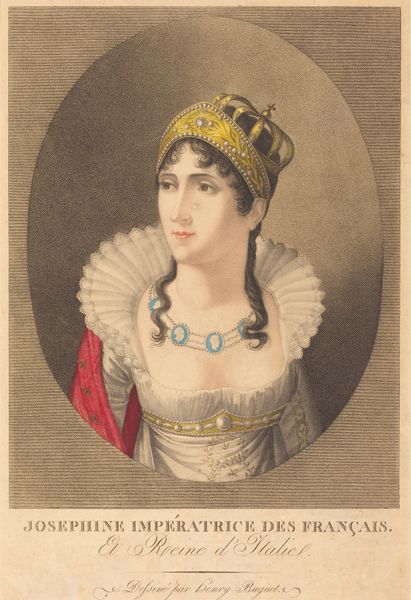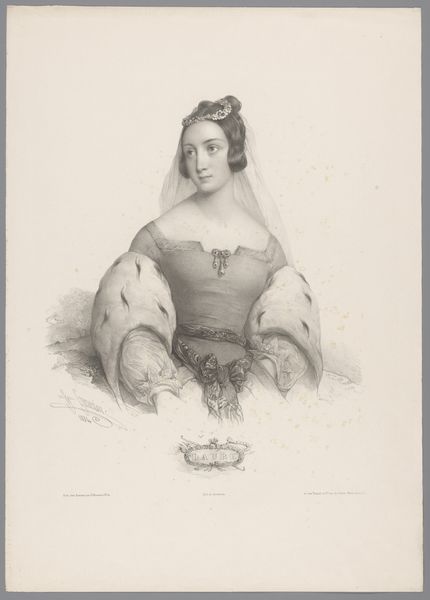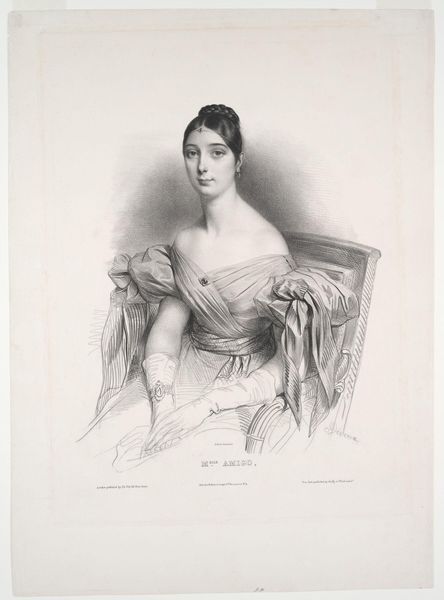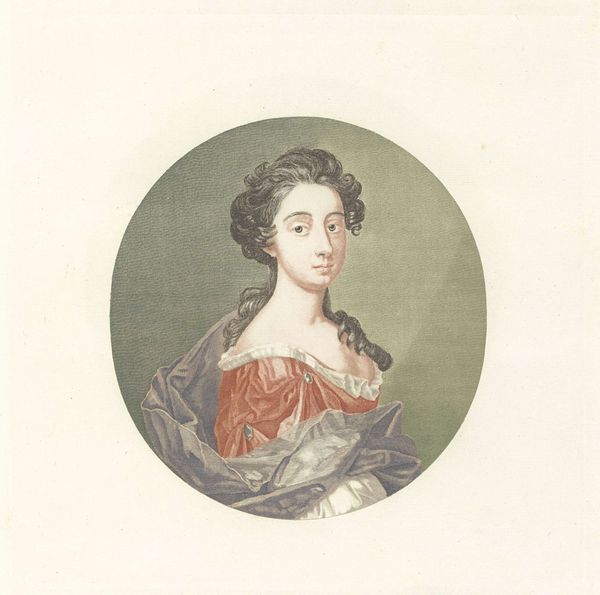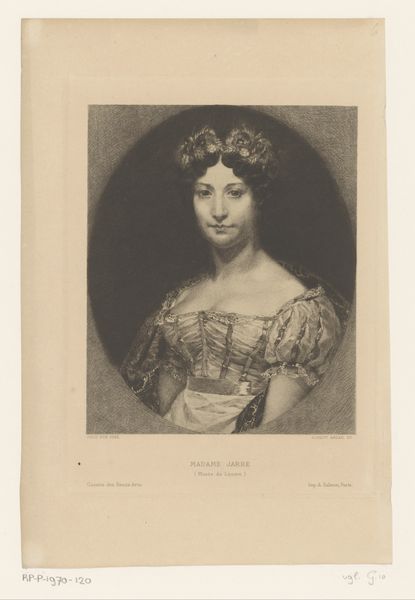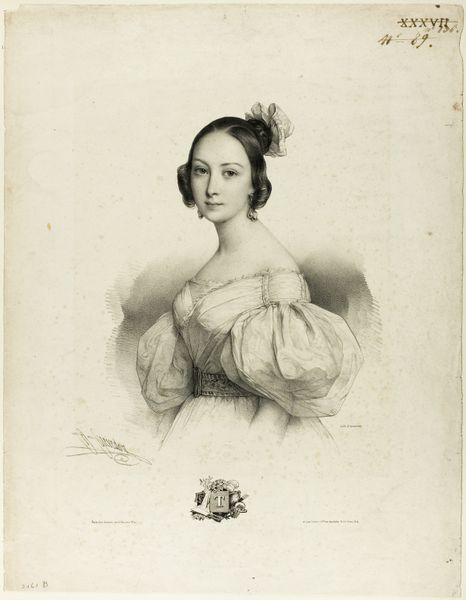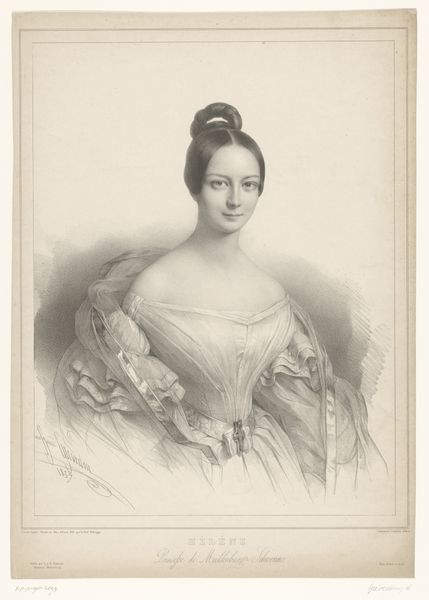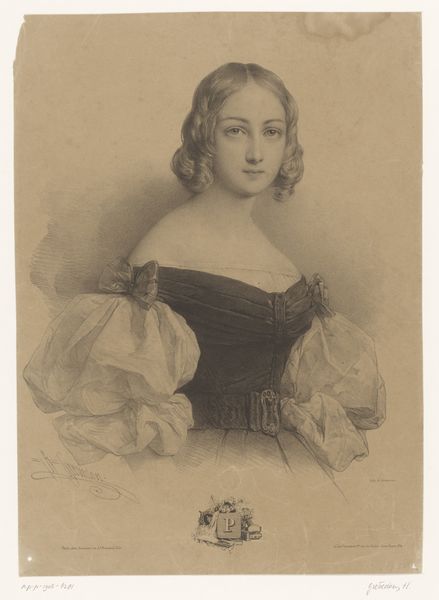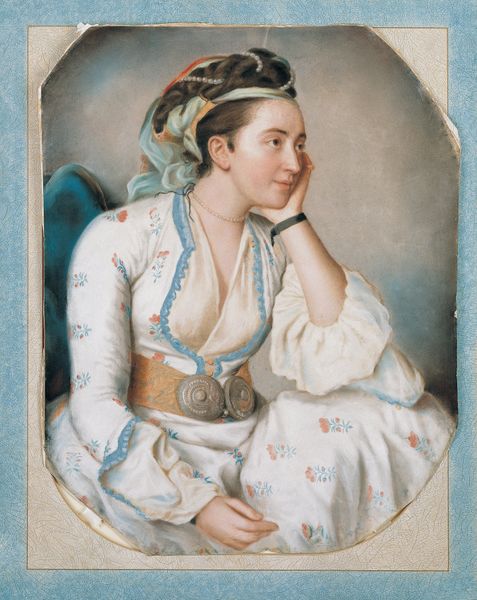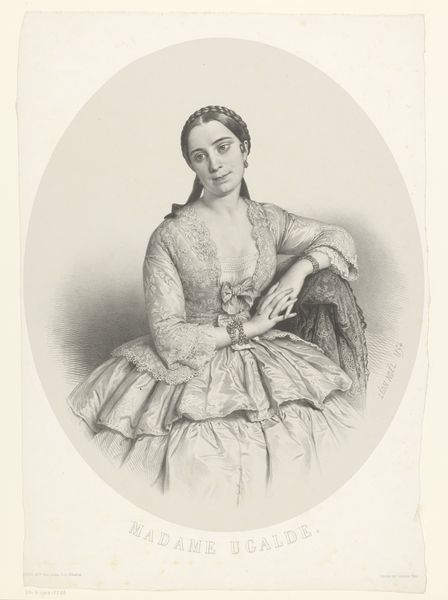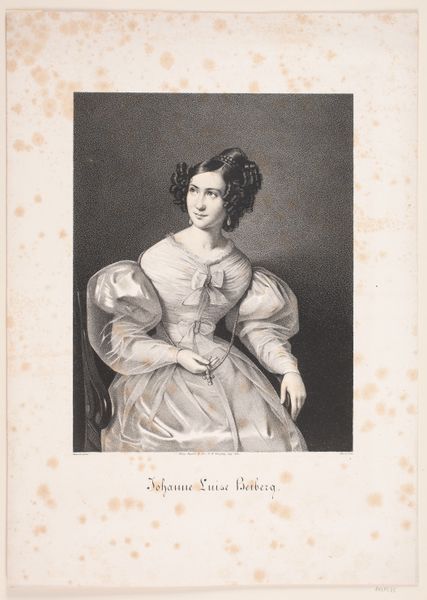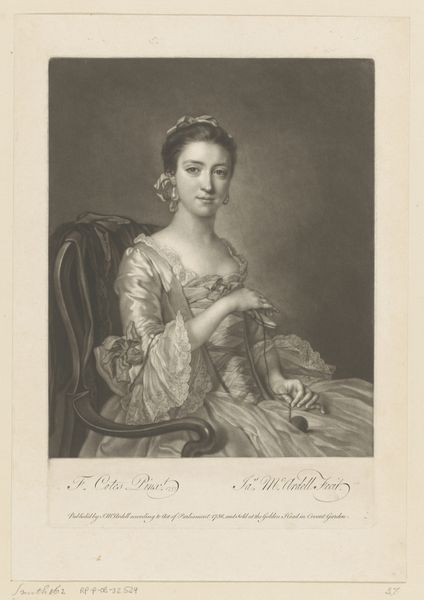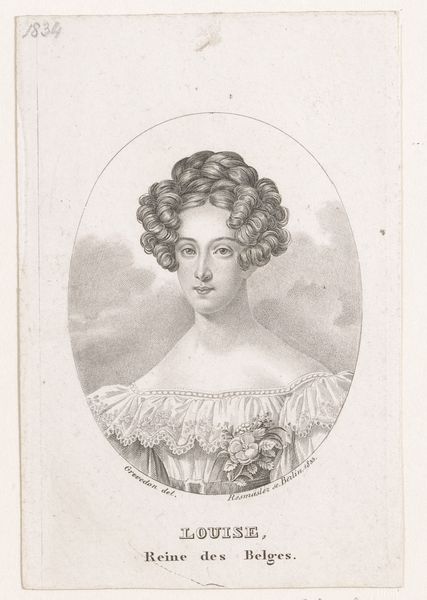
drawing, print, gouache, watercolor, graphite, pastel
#
portrait
#
drawing
# print
#
gouache
#
watercolor
#
england
#
underpainting
#
romanticism
#
graphite
#
watercolour illustration
#
pastel
#
portrait art
#
watercolor
Dimensions: 243 mm × 188 mm
Copyright: Public Domain
Editor: So, here we have "Lady Georgina Murray," a watercolor, gouache, and graphite portrait completed in 1843 by Elizabeth Murray. The pale, delicate colors create this really interesting, almost melancholic mood, at least to me. What do you see when you look at this portrait? Art Historian: Indeed, it’s evocative. Beyond the technical mastery of blending watercolour with gouache, I see layers of social and symbolic coding. Notice the rose pinned to her dress, and those woven into her shawl. In the Victorian language of flowers, roses, especially the deeper shades, can denote beauty and love, but in this washed out palette it becomes mournful. Do you notice how they appear? Editor: I do. I hadn't thought about the color as being sort of drained. So you're suggesting the choice to desaturate typical romantic imagery is meaningful? It feels very different from typical portraiture of the period. Art Historian: Precisely! It diverges. Murray may be subtly alluding to deeper emotional states, or perhaps critiquing the expected symbols of femininity of that era. This choice might resonate with personal sentiments of Lady Georgina. Think of the continuous power and meaning shift of these symbols as decades and societies change. Editor: That's really fascinating. I had initially only responded to the colors as "pretty" but it's much more than that when considering historical and social context. I’ll never see these portraits the same way! Art Historian: Absolutely. Symbols accrue weight, often evolving with time, but tracing their roots offers remarkable insight into art and ourselves.
Comments
No comments
Be the first to comment and join the conversation on the ultimate creative platform.
